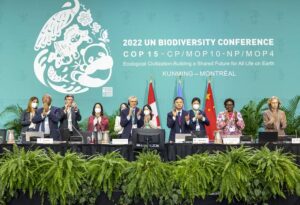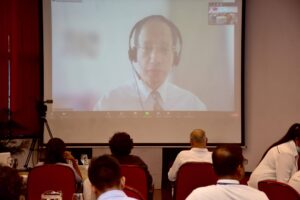(Read the full paper by Ina Porras and Paul Steele (IEED) 2019)
Tackling biodiversity loss is a growing priority for human survival. Introducing incentives for positive actions could play a key role in helping to reverse this loss. This paper explores the potential of using a novel approach to promote biodiversity conservation. Biodiversity credits or ‘bio credits’ are coherent units of measurement that track conservation actions and outcomes and can help improve tracking and transparency. Well-designed, they can make investments in biodiversity management more financially attractive, for example, by attracting private-sector finance. They can be used by governments to monitor their actions and report on biodiversity commitments. And as much of the world’s biodiversity and its richest biodiversity spots are often found in remote and poor tropical regions, we also argue that bio credits need to be inclusive, and founded on fair benefit sharing principles.
Tackling biodiversity loss is emerging as a growing priority for human survival. New data has revealed unequivocal links to ecological and economic tipping points. As a result, there is a renewed sense of urgency for institutions and systems to protect, restore and enhance biodiversity. As with carbon credits to control greenhouse gas (GHG) emissions, biodiversity credits – ‘bio credits’ – are a way to finance biodiversity improvements. Bio credits can be measured, tracked, and sold to raise funding which can be used as incentives for biodiversity conservation. Special attention in its design can also result in (inclusive) solutions to deliver local benefits to poor households. Bio credits are similar in the design to biodiversity offsets (used in the USA, Australia and the UK, for example). But they differ in use.
Bio credits are not designed to offset or compensate for actions with negative impacts on biodiversity elsewhere. In this sense, they are less contentious and do not depend on strict (and often unfeasible) legislation. In addition, few countries have national systems in place to promote and monitor biodiversity offsets. Even fewer of these systems are applicable to developing countries, where local inclusion and fairly sharing benefits are particularly important. This discussion paper examines the potential for developing countries to put in place a national scheme of bio credits that can be domestically and internationally sold, and which promotes fair benefit sharing with rural populations. The paper draws lessons from related incentives schemes which exist in carbon markets, especially REDD+ and voluntary community carbon offsets, as well as from wider examples of payments for ecosystem services (PES) schemes. Much can be learned from experiences with these related incentive schemes, which include species conservation banking (USA), eco-credits (Germany), a national PES scheme (Costa Rica), and wildlife credits (Namibia).
Based on the literature reviewed, we identified ways to develop a national bio credit scheme in a developing country. To date, no such bio credit scheme exists, but this paper sets out four key building blocks or characteristics needed to implement such a scheme:
- Simple, transparent, and cost-effective design
- Enabling policy from the government for implementation
- Market engagement to attract buyers and generate sales, and
- Inclusive and fair benefits for local people.
With the growing emphasis on biodiversity in the run-up to the 2020 United Nations Biodiversity Conference, it is likely that interest in incentive-type mechanisms such as bio credits will only grow. Done properly, bio credits may develop into a viable option to improve biodiversity conservation and reduce poverty.















